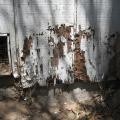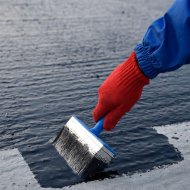Around-the-House Fixes That You Should Know About
When everything at home is running smoothly, it feels easy to say that in the event of something coming up, you’ll simply get a professional over to deal with it. However, these problems can be more multi-faceted than they appear in theory. What if the problem isn’t large enough to justify the cost of calling someone out? What if you don’t know what the issue is? Do you even need someone to come and fix it?
Understanding what you can deal with yourself can make you more confident in several areas of your home, and while professionals should still be considered in an emergency or severe situation, knowing how to deal with small fixes can be a great advantage in the home environment.
Your Washing Machine
The utilities of your home are invaluable, but it’s difficult to appreciate how instrumental they are to the continued operation of your chores and general existence until something happens, and they stop working. The washing machine can be an especially significant example of this due to the fact that when something goes wrong, it can often involve something like a leakage that can cause a noticeable amount of disruption. Knowing how to vent a washing machine drain pipe is also incredibly important, as it can prevent damaging fumes from emerging. This might be less of a fix and more maintenance that you have to perform every now and again, but it’s worth it to avoid the damage.
Lint from the Dryer
Elsewhere in the world of utilities, the dryer can be the next step for your clothes once your freshly maintained washing machine is done with them. However, it might not be fully known to you just how damaging the lint that comes off these clothes can be to the dryer when it goes unremoved. In fact, due to the dryness of the lint and the extreme heat that the dryer itself can reach, there can even be a substantial risk of fire here, and so making a conscious effort to remove this lint regularly can help to avert a serious disaster.
Bleeding a Radiator
Radiators might simply seem to you to be devices that are beyond the realms of casual repairs. They are machines that come with complex wiring and connection to the mains that you shouldn’t mess with unless you have a very good idea of what you’re doing. However, the idea of bleeding your radiator might be one that you’ve come across before, and when executed properly, it can help to improve the energy efficiency of your home and potentially reduce problems you might be having with the heating.
While it’s understandable that you might not want to bite off more than you can chew, looking into how to do this for yourself might be easier than you expect and could be a promising prospect.
Dealing with Mold
Not all houses are blessed with proper ventilation, and when certain times of the year roll around and just make every room as damp as possible, it can be difficult to do anything about the mold that starts appearing on the walls and ceilings. Of course, there is always the option of mold cleaner and remover, but this doesn’t do much to address the initial problem. It might feel as though these problems are too tightly linked to the architecture of the house, but implementing a dehumidifier into the rooms that are most affected could see a significant improvement in this regard. Just watching the amount of water that comes out of the machine after some use will help you understand where the mold is coming from.
More to Read:
Previous Posts:








